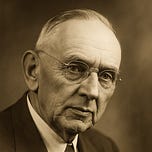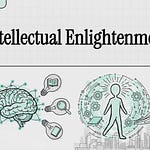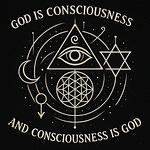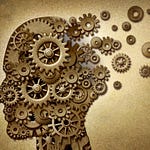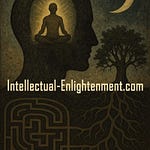Intellectual Enlightenment Analysis
Edgar Cayce, often referred to as “the sleeping prophet”, left behind over 14,000 documented readings that bridge esoteric Christianity, reincarnation, vibrational healing, and metaphysical cosmology. The video in question dramatizes his most ambitious thesis: that you, the viewer, are not simply a human having a spiritual experience, but a divine being who volunteered for the densest, most disorienting experiment in all of creation, incarnated consciousness.
What follows is a breakdown of Cayce's cosmological arc and how it resonates, or collides, with modern frameworks in theology, psychology, and metaphysics.
🔹 1. Creation by Emanation: Soul Families and Divine Patterns
According to Cayce, the human soul didn’t emerge from physical birth but from a wave of divine emanation, a cascade of individualized consciousness emerging from the mind of God. These “soul families” mirror certain patterns found in Kabbalistic and Hindu cosmology, the idea that consciousness fragments and multiplies to experience itself through diversity.
🧠 Analytical Note: While this echoes archetypes from Gnostic texts and the Upanishads, it also plays into the modern yearning for origin myths that dignify personal suffering with cosmic meaning. It offers spiritual belonging at a time when institutional religion has eroded for many.
🔹 2. The Great Experiment: From Spirit to Matter
Cayce’s view reframes the human condition not as a punishment for sin, but as a voluntary exploration of consciousness in increasingly dense forms, from elemental energies to crystals, plants, and eventually human beings. This ontology merges reincarnation with the evolution of form, suggesting that matter is not separate from spirit but a slowed vibration of it.
🧠 Comparative Lens: This concept aligns loosely with Teilhard de Chardin’s "Omega Point" and Ken Wilber’s integral theory, each placing human evolution within a spiritualized cosmogenesis. It is a rebuttal to both materialist nihilism and traditional dualism.
🔹 3. Forgetting and Remembering: Amnesia as Initiation
Cayce’s model asserts that souls had to forget their divine origin to authentically experience the material realm. This forgetting wasn't a mistake, but a built-in feature. The “return” to spiritual awareness, through struggle, relationships, or awakening, is not regression but completion.
🧠 Philosophical Insight: This mirrors Plato’s theory of anamnesis, that learning is recollection, and reframes suffering as a path to integration, not merely endurance.
🔹 4. Practical Spirituality: The World Is the Temple
Perhaps most powerfully, Cayce emphasized practical spirituality, that enlightenment is not escape but integration. Every conversation, meal, or moment can be a ritual act if imbued with divine intention. This bridges the sacred and the mundane.
🧠 Contrast with Escapism: Unlike other esoteric teachings that devalue the body or the Earth, Cayce’s model empowers the individual to sanctify the ordinary. The material world isn’t a trap, it’s an instrument of divine expression.
🔹 5. Harvest Time: A Global Awakening?
The video closes with Cayce’s prophecy that humanity is in a harvest phase, a time of mass remembering and completion. While the idea of a spiritual tipping point is compelling, it flirts with the kind of eschatological language common to both new age optimism and fundamentalist alarmism.
🧠 Cautionary Note: The idea of "graduating" souls versus "asleep" masses risks creating a spiritual hierarchy. While the vision is hopeful, discernment is required to prevent spiritual elitism masked as cosmic insight.
🌀 Final Reflection: Myth, Memory, and Meaning
Whether or not one accepts Cayce’s claims as metaphysical fact, their narrative architecture serves a deep psychological function: they offer coherence, meaning, and purpose in an otherwise fragmented world.
Carl Jung might interpret these readings as archetypal mythology emerging from the collective unconscious, a symbolic roadmap for personal individuation. The key, then, isn’t whether every claim is literally true, but whether they catalyze transformation, integrity, and service.
As Cayce himself once said:
“The spirit is the life, the mind is the builder, the physical is the result.”
In that triad, perhaps we find a usable truth, one that empowers, rather than escapes, the human experience.

